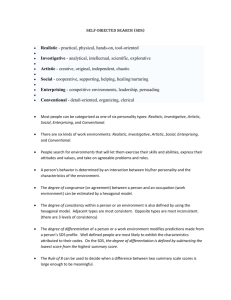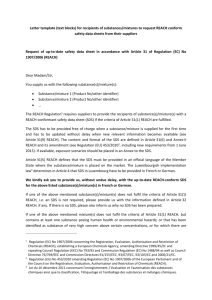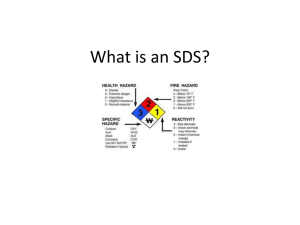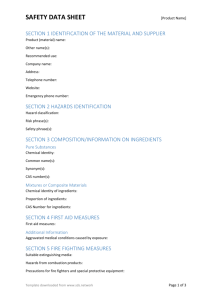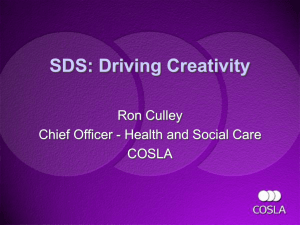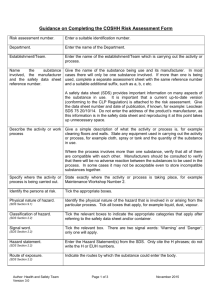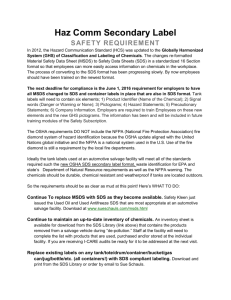WORD
advertisement
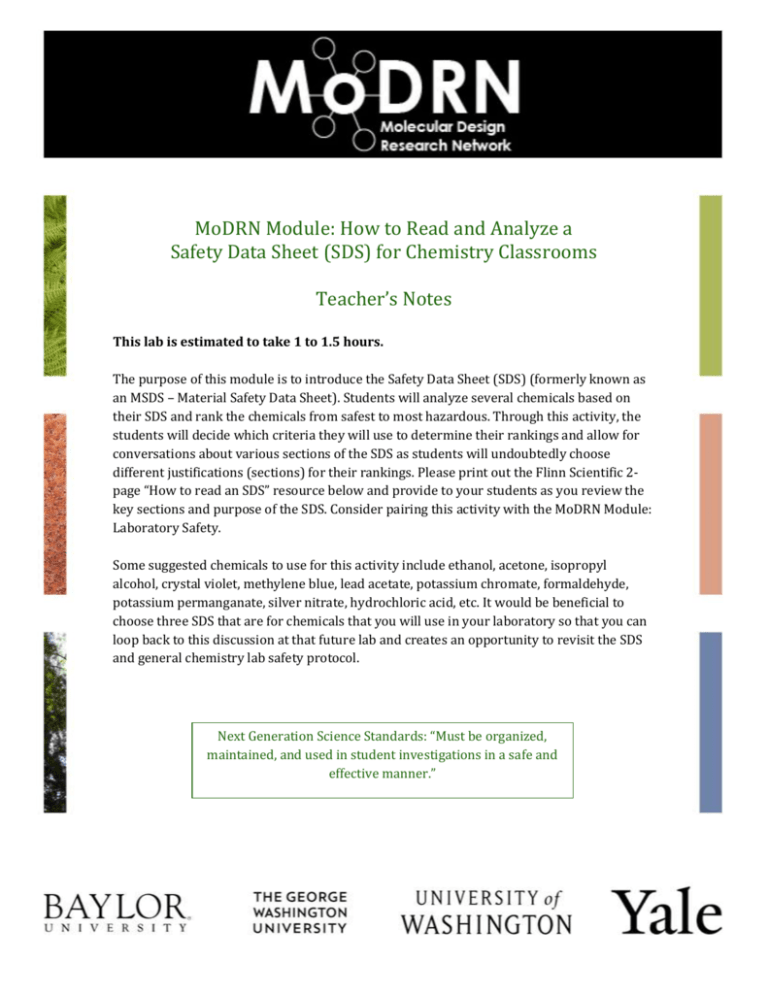
MoDRN Module: How to Read and Analyze a Safety Data Sheet (SDS) for Chemistry Classrooms Teacher’s Notes This lab is estimated to take 1 to 1.5 hours. The purpose of this module is to introduce the Safety Data Sheet (SDS) (formerly known as an MSDS – Material Safety Data Sheet). Students will analyze several chemicals based on their SDS and rank the chemicals from safest to most hazardous. Through this activity, the students will decide which criteria they will use to determine their rankings and allow for conversations about various sections of the SDS as students will undoubtedly choose different justifications (sections) for their rankings. Please print out the Flinn Scientific 2page “How to read an SDS” resource below and provide to your students as you review the key sections and purpose of the SDS. Consider pairing this activity with the MoDRN Module: Laboratory Safety. Some suggested chemicals to use for this activity include ethanol, acetone, isopropyl alcohol, crystal violet, methylene blue, lead acetate, potassium chromate, formaldehyde, potassium permanganate, silver nitrate, hydrochloric acid, etc. It would be beneficial to choose three SDS that are for chemicals that you will use in your laboratory so that you can loop back to this discussion at that future lab and creates an opportunity to revisit the SDS and general chemistry lab safety protocol. Next Generation Science Standards: “Must be organized, maintained, and used in student investigations in a safe and effective manner.” Supplemental Readings The following are supplemental readings for you and your students to understand the Safety Data Sheet: Chemical Hazard and Alternative Toolbox. (2014). ChemHAT. Retrieved from http://www.chemhat.org/ Flinn Scientific, Inc. (n.d.). How to read an SDS. Retrieved from http://www.flinnsci.com/media/1041084/how_to_read_an_sds.pdf OSHA. (2012). Hazard Communication Standards: Safety Data Sheets. Retrieved from https://www.osha.gov/Publications/OSHA3514.html National Science Teachers Association. (2014). OSHA adoption of Globally Harmonized System of classification and labeling of chemicals. Retrieved from http://www.nsta.org/docs/GloballyHarmonizedSystemOfClassificationAndLabelingOfChem icals.pdf National Science Teachers Association. (n.d). Safety in the science classroom, laboratory, or field site. Retrieved from http://www.nsta.org/docs/SafetyInTheScienceClassroomLabAndField.pdf National Science Teachers Association. (2014). Safety in the science classroom. Retrieved form http://www.nsta.org/safety/ Student Learning Objectives At the end of this activity, the student will be able to: Recognize important elements of a Safety Data Sheet (SDS) Realize the importance of the SDS in laboratory and classroom safety protocol Analyze an SDS and predict safety concerns from the label Rank chemicals in order of hazard by using the SDS to evaluate the safety of the chemical. Lab Safety Always remember to follow the posted lab safety and waste disposal instructions. Please visit the American Chemical Society for Safety Guidelines. http://www.acs.org/content/acs/en/education/policies/safety.html Real World Application We are exposed to potentially harmful chemicals on a daily basis. By understanding how they are classified, we can prevent serious injury, especially considering that potentially dangerous chemicals are found in every day products such as household cleaners, personal care products, etc. Activity Instructions 1. Obtain the SDS for three different chemicals, provided by your teacher. 2. In groups of 2 or 3, analyze the SDS against each other for Section 11: Toxicological Information. Consider the following questions as you analyze the chemicals: A. Does the chemical have a human health impact, an ecological impact or both? B. Is there an acute or chronic effect? Which do you think makes the chemical more dangerous? C. What are the routes of exposure and how does that impact whether the chemical is harmful or not? For example if it’s only harmful if swallowed, does that make it less harmful because you’re following lab protocol that says don’t drink chemicals? Or not? D. What pictograms do you see on the SDS? Pictograms tell you about the hazards without using words. 3. Using criteria established by your group, rank the three chemicals from safest to most hazardous. Be sure to record the reasoning you used to justify your ranking. 4. Compare your rankings with other groups. Discuss why you ranked them as you did and consider how others ranked them, along with their justifications, too. Did you or any other groups use more than just Section 11 to come to your conclusion? Why or why not? Did you analyze the toxicological data just as it relates to humans or how it relates to animals or the ecosystem? 5. Discuss the ranking as individual groups or as a class with your teacher. Did everyone have the same rankings? What were some of the main sections groups used to classify safety? What are some things you learned from this activity?

